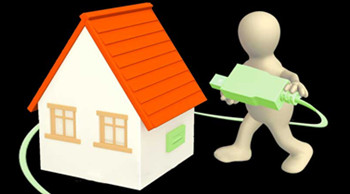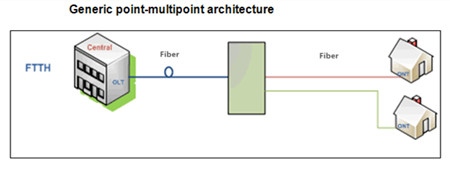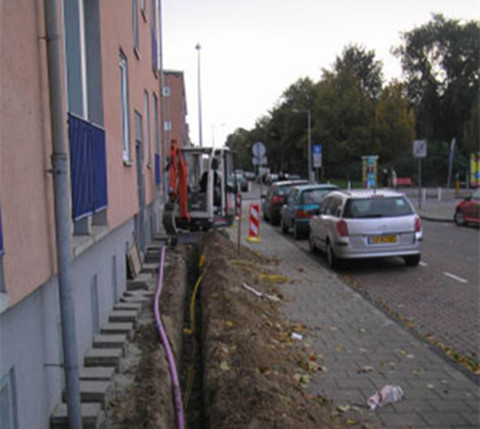In our digital world, people increasingly require higher bandwidth to facilitate daily life, whether for leisure, work, education or keeping in contact with friends and family. The presence and speed of internet are regarded as the key factor that subscribers would take into account when buying a new house. Recently there are a growing number of independent companies offering full fiber to the home (FTTH) services, ranging from local cooperatives and community groups to new operators. Today’s article will pay special attention to the reasons why we should implement FTTH network and the methods to reduce the cost of FTTH network.
Why Should We Deploy FTTH Network?

No denying that the world is changing rapidly and becoming increasingly digital. People nowadays are knowledgeable workers who rely on fast connections to information stored in the cloud to do their jobs. Therefore, installing superfast FTTH broadband is an investment in equipping communities with the infrastructure they need to not just adapt to the present life, but to thrive in the future.
What’s more, the economic benefits of FTTH, for residents, businesses and the wider community are potentially enormous. While there are upfront costs in FTTH deployments, particularly around the last drop, equipment and methodologies are evolving to reduce these significantly. Fiber to the home is proven to increase customer satisfaction, and enables operators to offer new services, such as video on demand, 4K TV and smart home connectivity.
As well as bringing in economic benefits, FTTH broadband provides local businesses with the ability to expand, invest and seek new opportunities by providing rapid connections to major markets. All of this leads to increased investment in the rural economy, providing residents with more choice and stimulating growth.
What to Do?
Although deploying FTTH network might be similar cost as deploying copper network, there are some methods that you should know about reducing the costs of FTTH architecture. Adopting the following three principles helps achieve FTTH deployment, maximizing return on investment and dramatically reducing deployment times.
1. Reuse the Existing Equipment
Time and the total cost of FTTH deployment are typically relevant with the civil engineering side of the project, such as digging a new trench and burying a new duct within it. Where possible, crews should look to reuse existing infrastructure—often there are ducts or routes already in place that can be used for FTTH and in building deployments. These could be carrying other telecommunication cables, power lines, or gas/water/sewerage. Installing within these routes requires careful planning and use of cables and ducts that are small enough to fit through potentially crowded pathways. Figure 2 shows a generic point-multipoint architecture that fiber jumper plays an important part in it.

Additionally utilizing the push and pull cables in FTTH infrastructure simply reduce costs and install time as network installers can easily complete FTTH deployment by using pushing or pulling cables: pushing can be aided by simple, cost-effective handheld blowing machines, or pulled through the duct using a pre-attached pull cord. Even for more complex and longer environment, FTTH deployment can be quickly completed other than requiring expensive blowing equipment to propel the cable through duct.
2. Choose the Right Construction Techniques
If it is time to start digging, always make sure you use appropriate construction methods. The appropriate method will minimize cost and time by making construction work as fast and concentrated as possible, avoiding major disruption to customers or the local area. And remember to make sure you follow best practice and use the right fiber cable and duct that can fit into tight spaces and withstand the high temperatures of the sealant used to make roadways good.

The cable and duct used within FTTH implementations is crucial. Ensure that it meets the specific needs of deployments, and is tough, reliable and has a bend radius. It should be lightweight to aid installation and small enough to fit into small gaps and spaces in ducts. Also look to speed up installations with pre-connectorized cables that avoid the need to field fit or splice.
3. Minimize the Skills Required
Staff costs are one of the biggest elements of the implementation budget. Additionally, there are shortages of many fiber skills, such as splicing, which can delay the rate at which rollouts are completed. Operators, therefore, need to look at deskilling installations where possible, while increasing productivity and ensuring reliability. Using pre-connectorized fiber is central to this—it doesn’t require splicing and is proven to reduce the skill levels needed within implementations.
Conclusion
To cope with the digital world, the network is in constant need of enhancements and the increasingly stressed bandwidth and performance requires ongoing adjustment. Regardless of the FTTH architecture and the technology to the curb, the pressure is on for the network installer to deploy FTTH quickly and cost-effectively, while still ensuring a high quality, reliable installation that causes minimal disruption to customers and the local area. Fiberstore offers a variety of optical equipment that are suitable in telecom field. Our fiber optic cables are available in different optical connector, single-mode and multimode fiber as well as indoor or outdoor cables. For example, patch cord LC-LC are also provided.

Thank you for the information structured cabling service
ReplyDelete